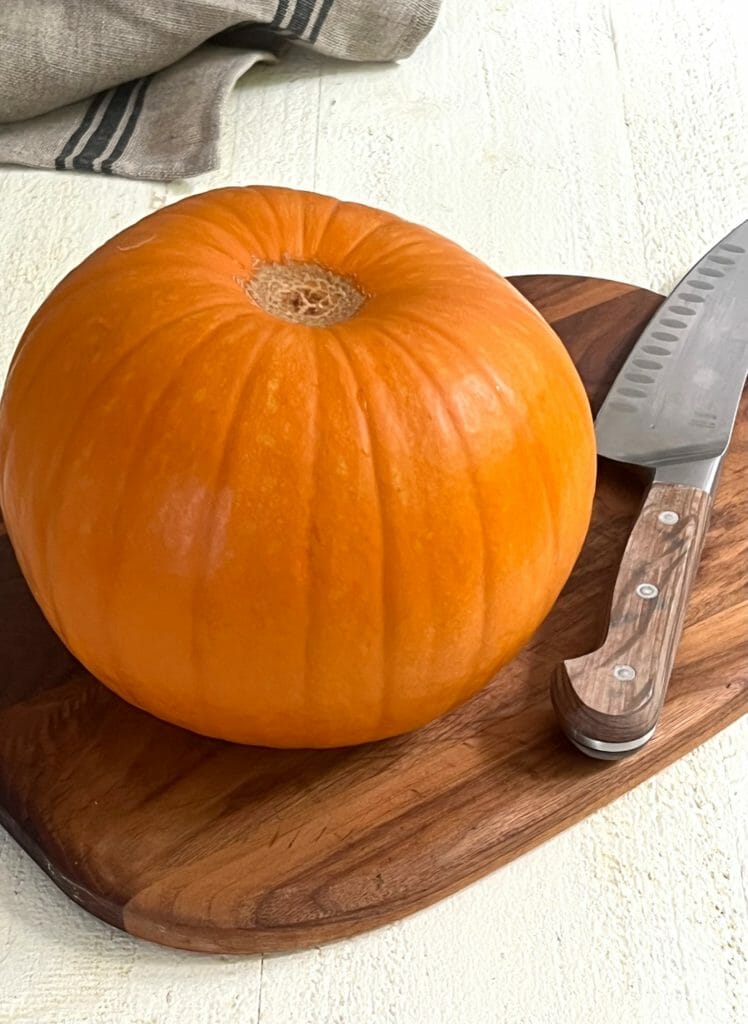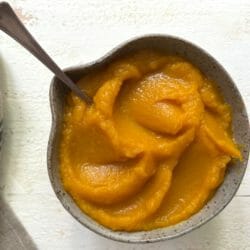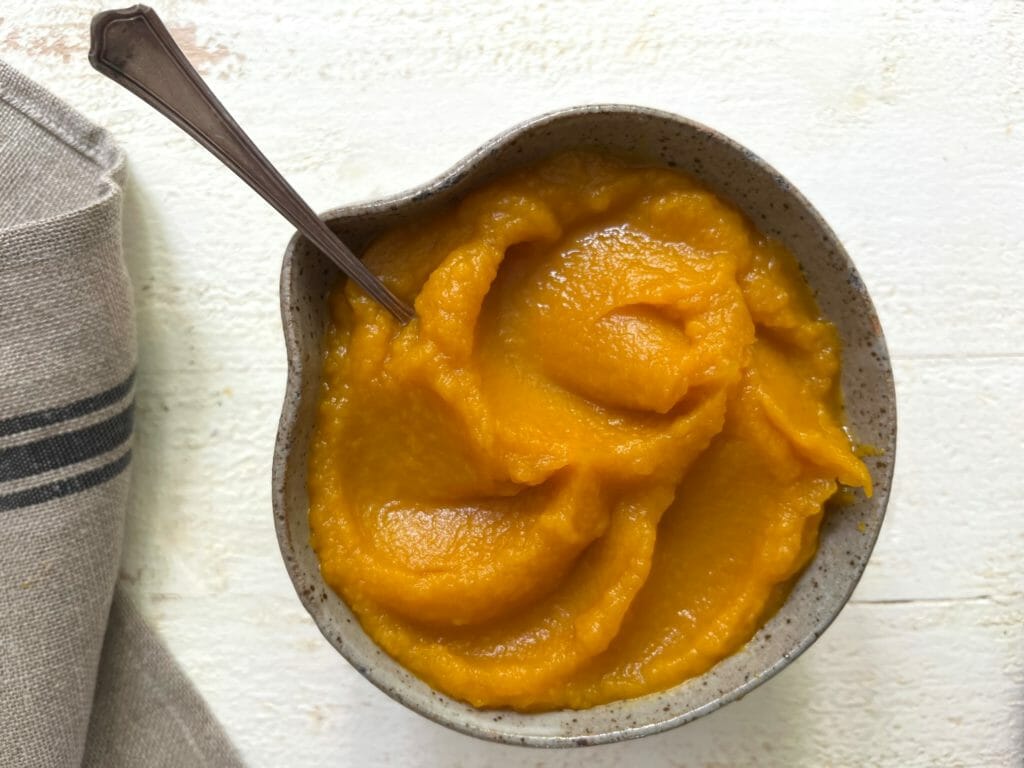Every spring we put a couple of pumpkin plants in the garden of the house we escape to on weekends. It’s outside the city where we live, with few neighbors and little noise beyond the birds who inhabit the canopy of oak trees that frame the house. It’s not far from Half Moon Bay, a town considered by many to be the pumpkin growing capital of the country. It has never come as a surprise that our pumpkins thrive there, keeping us in pies and muffins throughout the fall. The first step in all that baking, though, is knowing how to make pumpkin puree from a whole pumpkin.
Upside of Fresh Pumpkin
Starting with a whole pumpkin versus a can is pretty darn satisfying, not to mention the fact that it’s superior in taste and you get all those pumpkin seeds for roasting. Pumpkin is also enormously nutritious, rich in vitamin A, potassium, as well as iron. Besides all that, making your own pumpkin puree gives you major bragging rights with dinner guests and you can show the kids that their Thanksgiving pie comes from an actual pumpkin.
Tips for How to Make Pumpkin Puree
If you’ve never cooked a pumpkin from scratch, here are a few things to keep in mind:

1. Buy a Sugar Pumpkin
This is the best variety for pies and other baked goods. They’re sold at farmers’ markets, organic markets, and many supermarkets. There are plenty of other good eating pumpkins, too, which you can learn about here. Skip the supersized Halloween pumpkins, which are stringy, watery, and lack the flavor of a good cooking pumpkin.
2. Cut it in half with care
Use a sharp chef’s knife to cut the pumpkin in half down the center and get it into the oven to roast. There is no need to remove the seeds before roasting.
3. Roast the pumpkin until tender
Cook until the pumpkin is tender enough to easily pierce with a small knife. Once it’s cool enough to touch, it’s easy to scoop out the seeds.
4. Puree the pumpkin flesh
Peel away the pumpkin skin and puree the flesh in a food processor or blender.
5. Use the pumpkin in myriad dishes
The pumpkin can be used in sweet or savory dishes. It’s tasty enough on its own to enjoy with a drizzle of olive oil or butter and sprinkle of salt.
6. Strain the puree, if needed
Once your pumpkin is pureed, you may want to strain it a bit. Canned pumpkin is quite dense, with no visible liquid. Since most recipes are developed using canned, you want your pumpkin to be similar. Simply transfer the puree to a sieve or colander lined with cheese cloth set over a bowl for about 20 minutes. This is particularly important if you using another variety of pumpkin, such as rouge d’estampes, which has more liquid than a sugar pumpkin.
Now that you know how to make pumpkin puree, check out these recipes:
- Pumpkin Pie Milkshake
- Classic Pumpkin Pie from Cooking Light
- Pumpkin Pie with Brown Sugar Walnut Topping from Bon Appetit
- Baked Pumpkin Donuts
- Slow Cooker Pumpkin Bread
- 7 Tasty Ideas for using Leftover Pumpkin

How to Make Pumpkin Puree from a Whole Pumpkin
Ingredients
- 1 four-pound sugar pie pumpkin
Instructions
-
Preheat the oven to 425 degrees.
-
Cut the pumpkin in half down the center. If the pumpkin still has a stem, cut that off first. Set the 2 halves, cut-side-down on a rimmed baking sheet lined with parchment paper.
-
Bake until the pumpkin flesh is very tender (so tender you can easily slide a paring knife into the flesh in several places, 45 to 55 minutes).
-
Let the pumpkin cool long enough to handle. Use a spoon to scoop out the seeds and stringy bits. Save the seeds for roasting or discard. Peel and/or scoop the flesh away from the skin and put it into a food processor fitted with a metal blade. Discard the skin.
-
Run the processor until the pumpkin is smooth, a minute or so. If you don't have a food processor, you can do this with a blender, hand blender, or potato masher.
-
If the puree looks thin or if liquid begins to pool on top, transfer it to a sieve or cheese cloth-lined colander set over a bowl and leave it to drain for 20 to 30 minutes.
-
Store pumpkin puree in the refrigerator for up to a week or in the freezer for 3 months. If any liquid has separated from the solids, simply strain it off through a sieve or cheese cloth lined colander.
